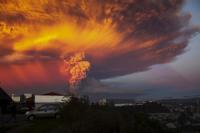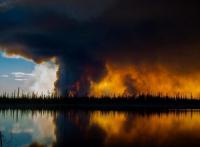-
Populism, terrorism converge to compound global risks
Aon publishes 2017 Risk Maps for Political Risk, Terrorism and Political Violence shows there has been a 14 percent increase in the number of terrorist attacks worldwide in 2016, up to 4,151 from 3,633 in 2015. Western countries saw a 174 percent increase in terrorist attacks in 2016, up from 35 attacks in 2015 to 96 attacks in 2016. Oil and gas companies were the target of 41 percent of terrorist attacks on commercial interests in 2016 and the trend has continued in 2017. But 2017 marks the first year in the last four where as many countries experienced a decline in political risk for investors as those experiencing an increase. This suggests a modest improvement in economic resilience after many years of deterioration. The potential for divergence between the United States and Europe around sanctions regimes could create uncertainty for investors in Iran, Russia, and even Cuba.
-
-
Yes, we can do “sound” climate science even though it’s projecting the future
Increasingly in the current U.S. administration and Congress, questions have been raised about the use of proper scientific methods and accusations have been made about using flawed approaches. This is especially the case with regard to climate science, as evidenced by the hearing of the House Committee on Science, Space and Technology, chaired by Lamar Smith, on 29 March 2017. Chairman Smith accused climate scientists of straying “outside the principles of the scientific method.” Smith repeated his oft-stated assertion that scientific method hinges on “reproducibility,” which he defined as “a repeated validation of the results.” He also asserted that the demands of scientific verification altogether preclude long-range prediction. The kinds of statements are misguided. They show a woeful ignorance about science and how it works, and in particular about climate science. Consequently, they ignore sound advice on how to best plan for the future.
-
-
Planet’s response to greenhouse gas emissions: Models, observations not so far apart
How hot our planet will become for a given amount of greenhouse gases is a key number in climate change. As the calculation of how much warming is locked in by a given amount of emissions, it is crucial for global policies to curb global warming. It is also one of the most hotly debated numbers in climate science. Observations in the past decade seem to suggest a value that is lower than predicted by models. But a University of Washington study shows that two leading methods for calculating how hot the planet will get are not as far apart as they have appeared.
-
-
Scientific challenge: Better preparation for volcanic eruptions

Volcano monitoring is critical for forecasting eruptions and mitigating risks of their hazards. However, few volcanoes are adequately observed, and many are not monitored at all. For example, fewer than half of the 169 potentially active volcanoes in the U.S. have any seismometers – an instrument to detect small earthquakes that signal underground magma movement. And only three have continuous gas measurements, which are crucial because the composition and quantity of dissolved gases in magma drive eruptions. Enhanced monitoring combined with advances in experimental and mathematical models of volcanic processes can improve the understanding and forecasting of eruptions, a new report says.
-
-
Ranking hazardous asteroid effects from least to most destructive

If an asteroid struck Earth, which of its effects—scorching heat, flying debris, towering tsunamis—would claim the most lives? A new study has the answer: violent winds and shock waves are the most dangerous effects produced by Earth-impacting asteroids. The study explored seven effects associated with asteroid impacts—heat, pressure shock waves, flying debris, tsunamis, wind blasts, seismic shaking and cratering—and estimated their lethality for varying sizes. Overall, wind blasts and shock waves were likely to claim the most casualties, with experimental scenarios showing that these two effects accounted for more than 60 percent of lives lost.
-
-
Big data study of disaster-related social media language helps first responders
Researchers explore how the properties of language style used in social media — particularly on Twitter — can help first responders quickly identify areas of need during a disaster. The researchers analyzed several hundred thousand tweets from social media users located in and around the areas where Hurricane Sandy, the Oklahoma tornadoes, and the Boston Marathon bombing occurred.
-
-
Mexico implements lessons from 1985 devastating earthquake
Five years after the devastating 1985 quake, which killed more than 10,000 people, Mexico equipped itself with one of the world’s most effective early warning systems for earthquakes. SASMEX: The Seismic Alert System of Mexico comprises more than 8200 seismic sensors located in the most active earthquake zone that runs between Jalisco, Michoacán, Guerrero, Oaxaca, and Mexico City.
-
-
New era of western wildfire requires new ways of protecting people, ecosystems

Current wildfire policy cannot adequately protect people, homes, and ecosystems from the longer, hotter fire seasons climate change is causing. Efforts to extinguish every blaze and reduce the buildup of dead wood and forest undergrowth are becoming increasingly inadequate on their own. Instead, experts urge policymakers and communities to embrace policy reform that will promote adaptation to increasing wildfire and warming.
-
-
Latest science on sea level rise projections: In support of California policy guidance
An estimated 75 percent of California’s population lives in coastal counties. Sea-level rise, already underway, threatens hundreds of miles of roads and railways, harbors, airports, power plants, wastewater treatment plants, coastal wetlands, beaches, dunes, bluffs, and thousands of businesses and homes. In a comprehensive analysis of the factors that affect how much the ocean will rise along California’s coast in coming decades, a seven-member team of experts has provided the state with a report on the best-available sea-level rise science — including recent scientific advances on the role of polar ice loss.
-
-
Cities inland could be reshaped by migration from sea-level rise
When Hurricane Katrina struck Louisiana in 2005, cities inland saw an influx of evacuees escaping the storm and its aftermath. Now, a new study predicts that this could happen again as a result of sea-level rise. Researchers estimate that approximately 13.1 million people could be displaced by rising ocean waters, with Atlanta, Houston, and Phoenix as top destinations for those forced to relocate. The study is the first attempt to model the destination of millions of potentially displaced migrants from heavily populated coastal communities.
-
-
Asteroid to fly by Earth on 19 April at a safe, but uncomfortably close, distance

An asteroid as big as the Rock of Gibraltar will streak past Earth on 19 April at a safe, but uncomfortably close, distance. Although there is no possibility for the asteroid to collide with our planet, this will be a very close approach for an asteroid of this size. The encounter on 19 April is the closest this asteroid has come to Earth for at least the last 400 years and will be its closest approach for at least the next 500 years.
-
-
In West Africa, investment key in adapting to climate change
Climate change will likely have negative impacts on food production in West Africa, with crop yields and grass for livestock grazing likely to decline in the future. A new study provides insights on how strategic planning by decision makers could ease or exacerbate food security challenges in the region.
-
-
New resilience study helps governments prevent disaster-related loss
Hurricanes, wildfires, tsunamis, and other disasters cannot be stopped, but countries can plan for them — something some areas of the world seem to do better than others, according to a new study. In the study, thirty-eight factors that affect a country’s resilience were derived from national and international databases, and the researchers used these databases to grade the resilience of each country and continent and develop a comprehensive index that includes indicators such as the number of disasters and their death tolls, as well as an area’s population, infrastructure, economy and educational system.
-
-
Harsh U.S. weather in March expected to cost insurers more than $2 billion
An extremely active period for severe weather persisted in the United States throughout March, as four separate significant outbreaks led to extensive damage in central and eastern parts of the country. The most prolific outbreak from 6 to 10 March resulted in major damage from tornadoes, large hail, and straight-line winds in the Plains, Midwest, and Southeast. Total economic losses for this event alone were estimated at $1.7 billion, while public and private insurance claims were listed at $1.2 billion. The aggregated cost to the insurance industry from the four events was expected to exceed $2.0 billion.
-
-
Earthquake early warning vital for city transit
Although no one can reliably predict earthquakes, today’s technology is advanced enough to rapidly detect seismic waves as an earthquake begins, calculate the maximum expected shaking, and send alerts to surrounding areas before damage can occur. This technology is known as “earthquake early warning” (EEW). An EEW system called “ShakeAlert” is being developed and tested for the West Coast of the United States.
-
More headlines
The long view
Strengthening School Violence Prevention
Violence by K-12 students is disturbingly common. Ensuring that schools have effective ways to identify and prevent such incidents is becoming increasingly important. Expanding intervention options and supporting K-12 school efforts in Behavioral Threat Assessment and Management (BTAM) would help.
Huge Areas May Face Possibly Fatal Heat Waves if Warming Continues
A new assessment warns that if Earth’s average temperature reaches 2 degrees C over the preindustrial average, widespread areas may become too hot during extreme heat events for many people to survive without artificial cooling.
Trump’s Cuts to Federal Wildfire Crews Could Have “Scary” Consequences
President Donald Trump’s moves to slash the federal workforce have gutted the ranks of wildland firefighters and support personnel, fire professionals warn, leaving communities to face deadly consequences when big blazes arrive this summer. States, tribes and fire chiefs are preparing for a fire season with minimal federal support.
